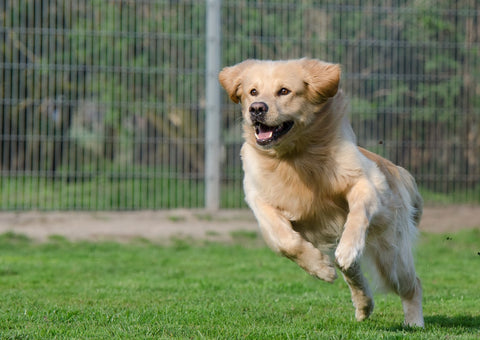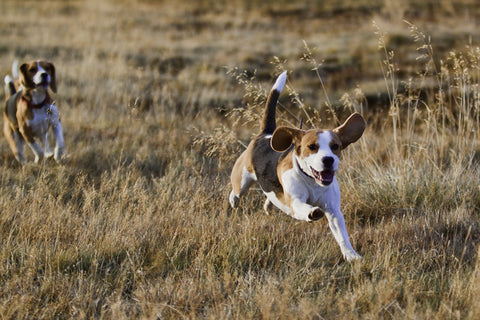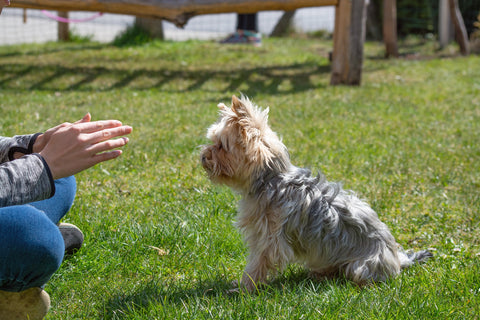We all want our dogs to have an “on and off” switch, meaning when we’re up and ready to be active, our dog is right there with us, and we’re ready to sit on the couch or eat dinner, our dog is laying quietly on the ground or their bed. Simple right? To us, maybe – but to our dogs this is a fairly complex concept.
A dog that’s “on” is in a state of high arousal. This may be caused by variety of things including you playing or training with them, you walking in the door after being gone all day, or a new guest coming in the house of the two or four-legged variety. In high arousal, your dog’s heart rate is up, their adrenalin is pumping, and they are ready to move! Additionally, fun or happiness is often associated with this state of high arousal, which encourages your dog to want to stay highly aroused. In other words, your dog has a lot of value for being excited and active. This is a good thing, until it’s not.
As many of you have likely experienced, asking your dog to come down from being in a high arousal state to a low arousal state is pretty challenging unless your dog has completely worn themselves out and are dead tired. Not only do we not always have the luxury of completely wearing our dogs out, but it’s also not healthy to completely wear your dog out every day. If your dogs aren’t given time to rest and recover from high activity, they are more prone to injury and less likely to behave properly.
Rather than constantly heavily exercising our dogs, we as owners can help our dogs learn how to bring themselves from high arousal to low arousal, through boundary training! Boundary training is a foundational step in helping your dog build value for being calm and relaxed, rather then only valuing being excitable and active. The best part about boundary training is it can be implemented in any breed at any stage of life. All it takes is commitment by you!
Now, there is a disclaimer here: some dogs move from high arousal to low arousal more easily than others. This is influenced by age, genetics, and the environment the dog is in. Older dogs tend to be better at going into a state of low arousal, but they also find it more challenging to enter a state of high arousal. Breeds that were bred for work (e.g. Border Collies, English Pointers) have more trouble transitioning from high arousal to low arousal than breeds that were bred more for companionship (e.g. Papillon, Cavalier King Charles Spaniel). Finally, if your dog is in an environment with a lot of activity, they are going to have more trouble staying in a state of low arousal, compared to being at home.
Interested in learning more? Check out our blog on boundary training, or one of our Facebook pages for a live demonstration from Mondays with Marty. Additionally, the Puppy Classes we sponsor with Clare Owings at Four Paws Pet Salon goes in depth into all of the steps with Boundary Training and those details can be found on the Pet page of our website.
























